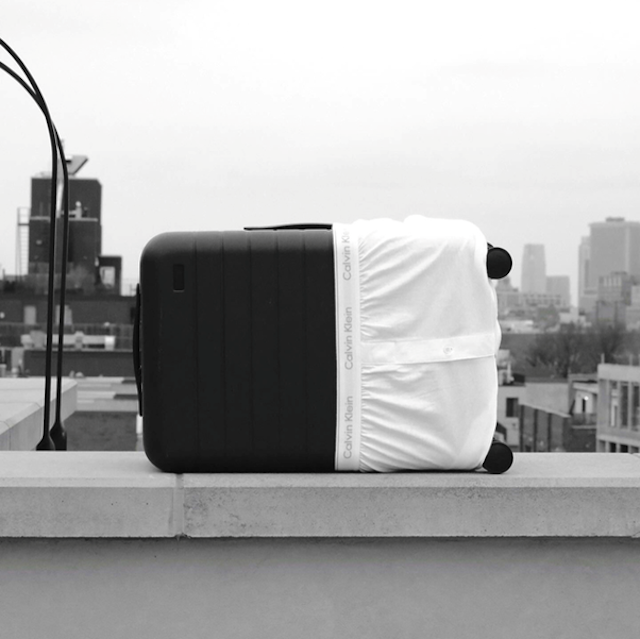Soiled briefs: your parody ad won't make a mark, here’s the fix
While the rest of us laughed at recent parody ads, Kubbco’s Chris Kubbernus felt the work lacked impact. He explains why.

Contrary to popular opinion, memes are not a cultural life raft that will automatically take you to the shores of consumer relevance. If not done with purpose, wit and a good deal of creative flair, parodying what’s already in culture can devalue a brand rather than add to its cultural cache.
When it comes to recent lazy parodies, the top prize goes to German brewer Brlo’s recent remake of the Calvin Klein ad campaign featuring Jeremy Allen White in his tighty whities. Brlo’s less-than-original spin was to reshoot the ad scene-for-scene with a regular-looking, fuller-bodied man enjoying the city in his underwear [Ad of the Day].
Replacing a Hollywood stud with an ordinary Joe in an attempt at a spoof has been done so often that once you recognize what’s going on within the first second of the ad, the rest is wallpaper.
Advertisement
Similarly, luggage brand Away tried to ride the wave of the viral campaign by dressing up a suitcase with underpants and placing it in a cityscape reminiscent of the original.
As a marketing professional, it makes me ask, “But why?”.

Uber Eats is another brand that failed to deliver the laughs recently.
Advertisement
In the brand’s Super Bowl spot this year, David and Victoria Beckham riff off each other in a parody of a scene from the recent ‘Beckham’ documentary series on Netflix. In the original scene, Victoria is not so honest about her upbringing and her father’s Rolls-Royce. [Also Ad of the Day].
The skit brought nothing new, interesting or funny to the conversation around the Beckhams. The ad also failed to showcase the brand’s purpose or convey why consumers should choose Uber Eats over other delivery services. And so, it became yet another example of a brand’s investment in celebrity far outweighing its investment in creativity.
Suggested newsletters for you
Contrast these efforts with Aviation Gin’s brilliant take on the controversial ‘Peloton Wife’ ad. Rather than just spoofing the ad, the brand tapped into the discussion around it, utilized it for its own purpose and moved the story on, putting the ‘Peloton Wife’ in a bar recovering from her experience with a gin cocktail and some support from friends.
Spoofing isn’t just about imitating what you see in culture; you’ve got to add something extra that will entertain and excite audiences and build your brand in the process. Here’s how to tap into the power of the meme.
Embrace the big picture!
If you continually jump on every trend and cultural bandwagon, you’ll turn people off, and you will fail to differentiate yourself from every other brand out there trying to be down with the kids.
Instead of thinking tactically when it comes to meme marketing, think strategically within the context of plans you have for your brand in the long term. Be selective by asking yourself: by doing this, how can I add value and translate what the brand is doing into the wider culture? Marketing is about making a brand desirable. The aim is to attract people to your brand. Desperation is not desirable; desperation is putting underwear on luggage.
Parody with purpose
Memes, like in any other form of marketing, should be saying something distinctive about a brand. Danish financial services brand MobilePay, a client of ours, created a viral meme when the Danish queen abdicated, passing the throne to her eldest son. The country’s currency is a krone, meaning crown, and so the brand’s meme showed the queen digitally transferring one ‘krone’ to her son through MobilePay, with a message asking him to take good care of it. Not only did the brand capture a big cultural moment here, but it also effectively demonstrated its brand purpose.

Test out your ‘funny’ material
Many brands today want to tap into comedy. However, like any stand-up comic, you’ll need to test your material with an audience to see what lands and doesn’t.
Accept that you’ll have hits and misses and don’t be put off by failure. Humour is very subjective so it can help to use a more targeted approach. Instead of diluting the comedy to make it universally appealing, focus your campaign on a specific audience or market that you hope it will resonate with.
Remember, to create culture you can’t play it safe
There was a time when the advertising industry created culture, with campaigns like ‘Got Milk’ which seeped into the collective consciousness. Another good example is Budweiser’s ‘Wassup’ campaign.
Now, the cultural clout has shifted to members of the public, thanks to platforms like TikTok democratizing creativity and content distribution. The upside is that agencies and brands can easily tap into what people are discussing on social media to inform their campaigns.
There’s safety in creating what you already know people want. The downside is that the industry isn’t investing in original ideas any more.
Piggy-backing won’t be the easy option forever. The world will eventually tire of content that regurgitates other content, and we will all start to crave originality.
The best ideas are often unproven and left-field and, therefore, are harder sell to the C-suite. In the not-too-distant future, brand owners must be braver and take more risks to make a cultural impact.
When in doubt, don’t meme
I have nothing against memes. I understand why many brands want to speak at an eye level with consumers. They want to speak the same language and share content similar to how friends would with each other, but brands need to remember they are a brand.
Going after cheap laughs and engagement aren’t the backbones of a solid marketing strategy; they are a one-way ticket to looking like a phony trying desperately to fit in with the “cool kids”.

